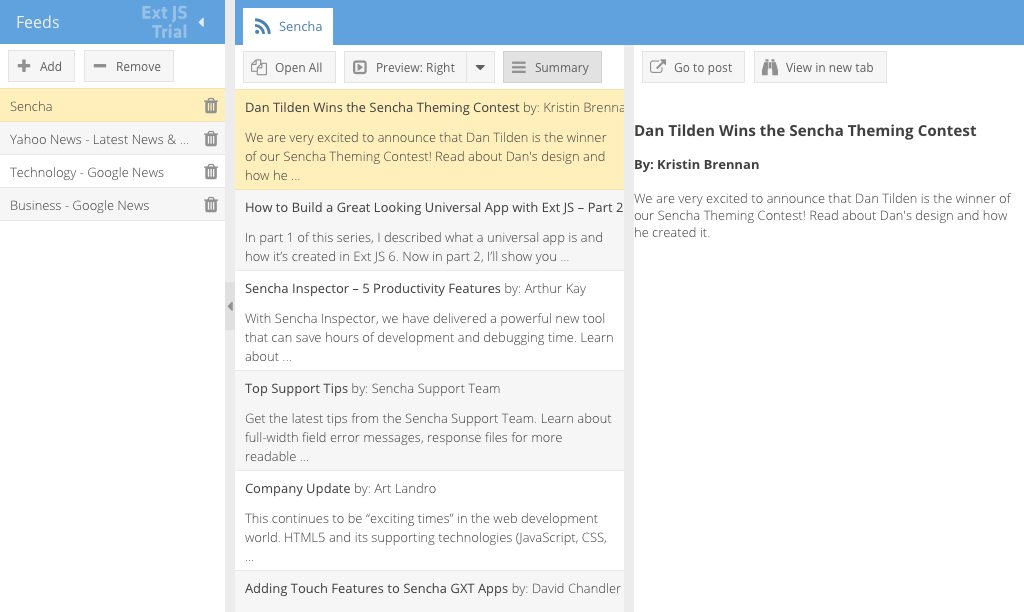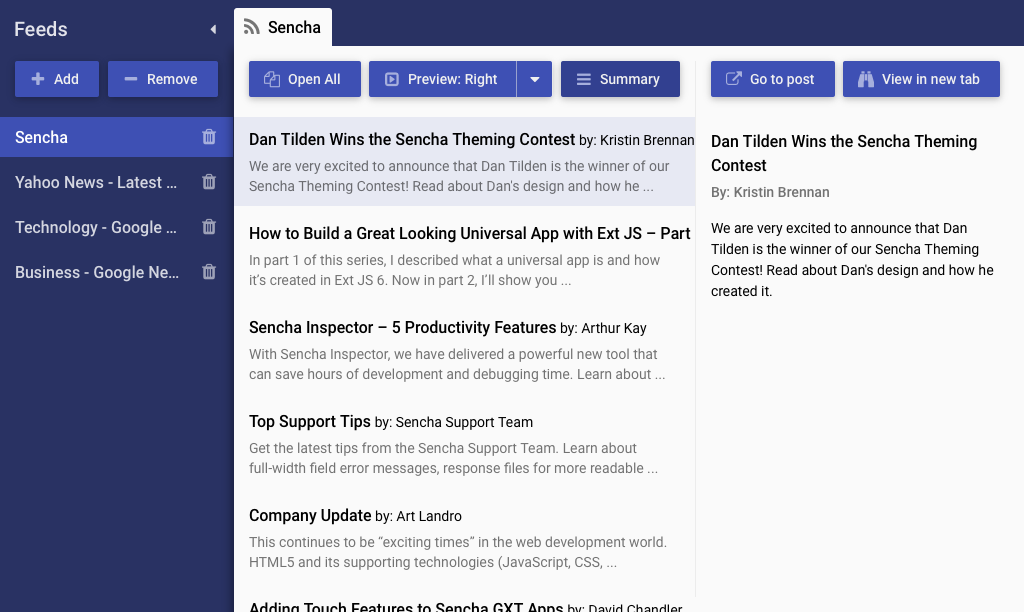Sencha ExtJS is a Javascript web-application framework, like many others that are currently popular, such as Angular, Backbone, and Ember. However, a key factor that makes ExtJS unusual is its age—ExtJS predates all of those frameworks by at least two years. Perhaps more impressively, ExtJS 1.0 shipped with Internet Explorer 6 compatibility, a browser that came out in 20011. Angular, the next-oldest framework, required IE82, a browser which, while still terrible, was much more capable3.
Recently, to promote their latest release, Sencha, the company behind ExtJS, held an application theming contest. Entrants were required to submit a custom theme package, which would in turn be applied to an example “Feed Viewer” application:

The theme selected as the best would win a prize of $2,500. Since I already had experience building a custom ExtJS theme package for the Restaurant Management System redesign project, I decided to enter.
I decided to base the design of the theme on Google’s material design guidelines. After drawing several explorations for the visual appearance of the feed viewer, I settled on a look that was not precisely material design, but designed to be a better visual fit for the ExtJS layout system:

My theme was selected as the best—not only for its appearance, but also for its well-organized implementation and clean code. If you are interested in using it for your own projects, the theme’s code is currently posted on Sencha’s official GitHub account!